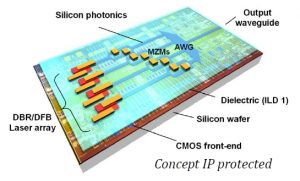Data traffic is projected to grow to 163 ZetaBytes by 2025. Data storage and compute technologies performance have evolved faster than data transmission technologies and transmission is now the bottleneck between compute and storage and between data and the end consumer. Data centres have achieved scale through a paradigm known as disaggregation where pools of compute, storage and networking can scale independently of each other, however the very fast compute and fast storage are limited by slow data network connectons. This, coupled with the increase in mobile video, video-on-demand, cloud and other bandwidth intensive services, puts strain on the optical communication networks that make up the internet. Laser enabled communications technology is at the core of moving all of the data between users and datacentres and increasingly within datacentres. Next generation technologies providing terabit per second data rates are needed to remove this bottleneck. Pilot Photonics has developed a disruptive laser technology that enables this scaling and will displace the single mode lasers that have been used in this market for more than two decades.
Known as Optical Combs, these new lasers offer the disruptive value proposition of reduced cost, footprint and power consumption, with a simultaneous increase in performance, and capacity. Pilot Photonics’ competitive advantage is its ability to generate optical combs using photonic integration. This state-of-the-art technique combines multiple optical functions on a single photonic chip, and is analogous to the development of microchips in the 1960s which combined multiple electronic functions on a single silicon chip. The use of photonic integration drives huge efficiencies in cost, footprint, power consumption and performance and Pilot Photonics has patent protection on the world’s most versatile optical comb source, which makes optical combs suitable for use in long haul optical networks for the first time.



